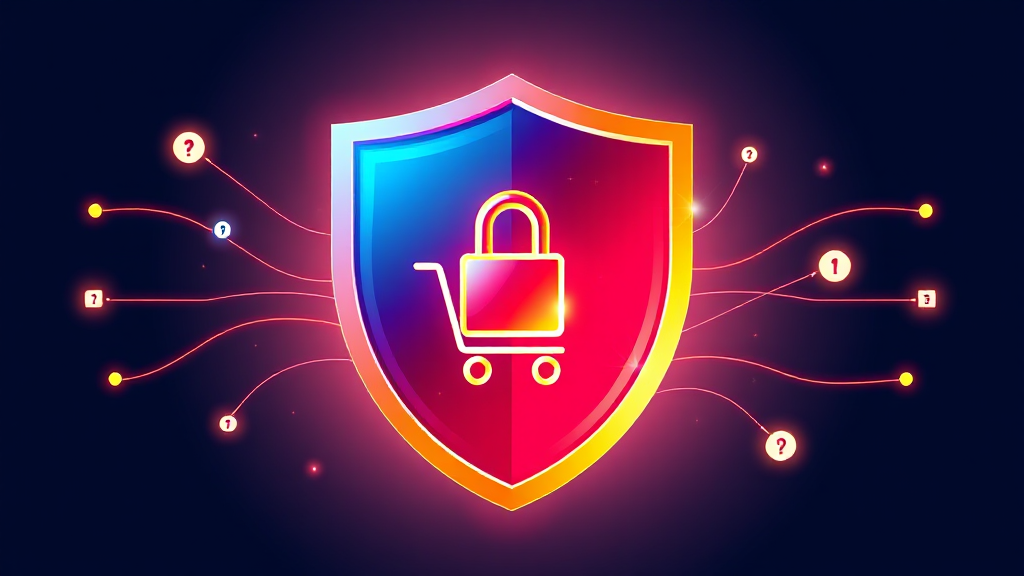Enhancing E-Commerce Security: Best Practices for Protecting Your Online Store

For a deeper dive, see our
.
Visualizing secure online transactions with glowing icons, representing the key focus on e-commerce security best practices.
Introduction
In today's digital landscape, e-commerce has become the backbone of global commerce, connecting businesses with customers across the world. However, as online transactions have surged, so too have threats to e-commerce security. From data breaches to payment fraud, malicious actors are constantly evolving their tactics to exploit vulnerabilities in online stores. For business owners and decision-makers, ensuring the safety of customer data and transaction systems is no longer optional—it's a critical imperative.
This article delves into the essential aspects of e-commerce security, providing actionable insights and best practices to safeguard your online store. Whether you're a startup or an established brand, implementing robust security measures is vital to building trust with customers and avoiding costly breaches.
Understanding E-Commerce Security Threats
What Are the Common Risks?
The e-commerce ecosystem is rife with potential vulnerabilities that can be exploited by cybercriminals. Some of the most common threats include:
Data Breaches Unauthorized access to customer databases, leading to exposure of sensitive information like credit card details and personal data.
Payment Fraud Skimming, chargeback fraud, and phishing attacks targeting both customers and merchants.
Malware Attacks Malicious software designed to infiltrate your systems and steal data.
Phishing and Social Engineering Deceptive schemes aimed at tricking employees or customers into revealing confidential information.
Why Are These Threats Increasing?
The rise in e-commerce activity, coupled with the increasing sophistication of cybercriminal techniques, has led to a surge in security threats. Additionally, the complexity of modern e-commerce systems—spanning multiple platforms, payment gateways, and third-party integrations—creates numerous entry points for attackers.
Best Practices for E-Commerce Security
1. Implementing Strong Authentication Measures
Two-Factor Authentication (2FA):
Require employees and administrators to use two-factor authentication when accessing sensitive systems. This adds an extra layer of security beyond just a username and password.
Role-Based Access Control (RBAC):
Limit access to sensitive data and systems based on job roles, ensuring that only authorized personnel can perform specific tasks.
2. Encrypting Data
SSL/TLS Encryption:
Ensure your website uses HTTPS by obtaining an SSL certificate. This encrypts data in transit, protecting customer information from being intercepted by hackers.
Data-at-Rest Encryption:
Encrypt sensitive data stored on servers or databases to prevent unauthorized access if the data is stolen.
3. Regularly Updating Software
Patch Management:
Keep all software, including your e-commerce platform, payment gateways, and plugins, up-to-date with the latest security patches. Developers frequently release updates to address vulnerabilities.
Automated Updates:
Enable automatic updates where possible to ensure you’re always running the most secure versions of your software.
4. Conducting Regular Security Audits
Vulnerability Scans:
Periodically scan your website and systems for vulnerabilities using automated tools or professional services.
Penetration Testing:
Simulate cyberattacks to identify weaknesses in your system’s defenses. This helps you proactively address potential breaches before they can be exploited.
5. Protecting Customer Data
Data Minimization:
Collect only the information necessary for transactions, reducing the risk of exposure if a breach occurs.
Data Retention Policies:
Implement policies for securely storing and deleting customer data after it’s no longer needed.
6. Monitoring Transactions
Fraud Detection Systems:
Use tools that analyze transaction patterns to identify and block suspicious activities in real-time, often powered by AI-driven analytics.
Behavioral Biometrics:
Monitor user behavior during login and checkout processes to detect anomalies that may indicate fraudulent activity.
7. Educating Employees
Security Awareness Training:
Train employees to recognize phishing attempts, social engineering tactics, and other security threats.
Regular Updates on Threats:
Keep your team informed about the latest cybersecurity trends and vulnerabilities relevant to e-commerce.
Choosing the Right E-Commerce Security Solutions
Selecting a Reliable Payment Gateway
Your payment gateway is one of the most critical components of your e-commerce security. Look for gateways that offer:
Tokenization Protects card data by replacing it with a unique token after the first transaction.
3D Secure (3DS) An additional verification layer for card payments, reducing chargeback fraud.
Investing in a Web Application Firewall (WAF)
A WAF acts as a barrier between your website and potential attackers, blocking malicious traffic and common attack vectors like SQL injection and cross-site scripting (XSS).
Using Customer Identity Verification Services
Tools like
or
provide identity verification services that help reduce fraud by confirming the authenticity of customers.
Conclusion
Ready to take the next step?
.
E-commerce security is a multifaceted challenge that requires a proactive and comprehensive approach. By implementing strong authentication measures, encrypting data, regularly updating software, conducting audits, protecting customer information, monitoring transactions, and educating employees, you can significantly reduce your risk of falling victim to cyberattacks.
Choosing the right tools—such as reliable payment gateways, web application firewalls, and identity verification services—further enhances your security framework. Remember, cybersecurity is an ongoing effort that requires constant vigilance and adaptation to emerging threats.
By prioritizing e-commerce security, you not only safeguard your business and customers but also build trust and loyalty in the marketplace. Stay ahead of potential threats, and ensure your online store remains a secure and reliable destination for shoppers worldwide.
Related Articles
Secure Payment Gateways: Ensuring PCI DSS Compliance in E-Commerce
Learn how to ensure PCI DSS compliance in your e-commerce business with our guide to secure payment gateways. Protect customer data and secure transactions with
Why EifaSoft Stands Out in MLM Software Development: A Comprehensive Guide
Discover what sets EifaSoft apart in MLM software development. Get a comprehensive guide to the latest innovations, including AI-driven insights and dynamic dat
Why Custom MLM Software Development is Critical for Modern Businesses
Discover why custom MLM software development is crucial for modern businesses. Learn how advanced blockchain technology provides a secure shield for your multi-